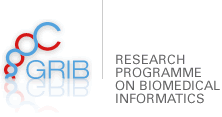
20/6/2012
Thesis of Khademul Islam: Delineating epigenetic regulatory mechanisms of cell proliferation and differentiation"
On Monday, 25th of June, Khademul Islam, member of the Biomedical Genomics Group of GRIB (IMIM-UPF) will defend his thesis at 14:00 in the Auditorium of PRBB.
Abstract
Recent advances in high throughput technology have opened the door to systematic studies of epigenetic mechanisms. One of the key components in the regulation of the cell cycle and differentiation is the retinoblastoma protein (pRB), a component of the RB/E2F tumor suppressor pathway that is frequently deregulated in cancer. The RBP2/KDM5A histone demethylase was shown to interact with pRB and regulate pRB function during differentiation. However, how precisely differentiation is coupled with halted cell cycle progression and whether an epigenetic mechanism is involved remain unknown. In the present study, I analyzed gene expression levels of human histone methyltransferases (HMT) and demethylases (HDM), as well as their targets in human cancers; and focused on RB/KDM5A connection in control of cell cycle and differentiation. In particular, I used Drosophila as a model to describe a novel mechanism where the RB/E2F pathway interacts with the Hippo tumor suppressor pathway to synergistically control cell cycle exit upon differentiation. Studying the role of miR-11, I found that the inhibition of dE2F1-induced cell death is its highly specialized function. Furthermore, I studied the induction of differentiation and apoptosis as the consequences of KDM5A deletion in cells derived from Rb knockout mice. I concluded that during differentiation, KDM5A plays a critical role at the enhancers of cell type-specific genes and at the promoters of E2F targets; in cooperation with other repressor complexes, it silences cell cycle genes. I found that KDM5A binds to transcription start sites of the majority of genes with H3K4 methylation. These are highly expressed genes, involved in certain biological processes, and occupied by KDM5A in an isoform-specific manner. KDM5A plays a unique and non-redundant role in histone demethylation and its promoter binding pattern highly overlaps with the opposing enzyme, MLL1. Finally, I found that HMT and HDM enzymes exhibit a distinct co-expression pattern in different cancer types, and this determines the level of expression of their target genes.



